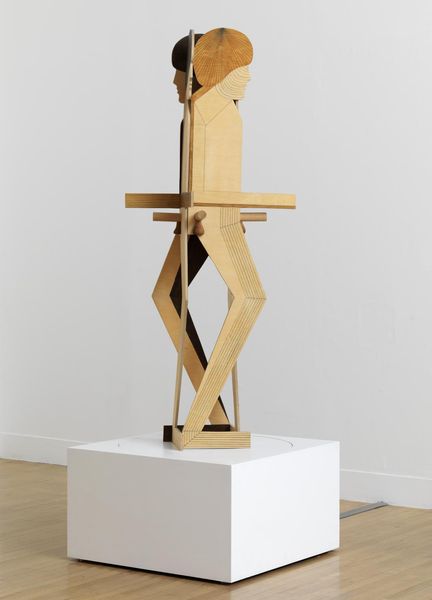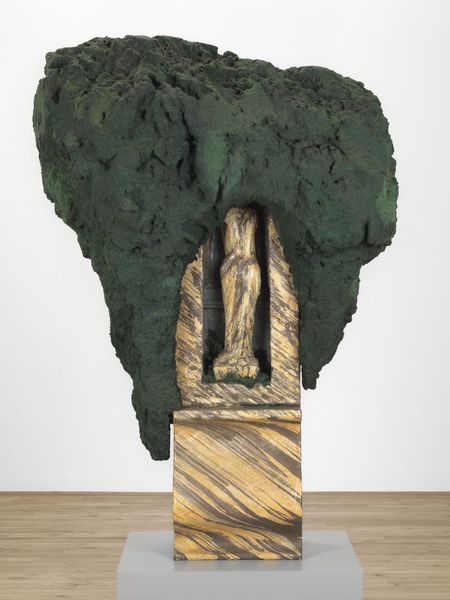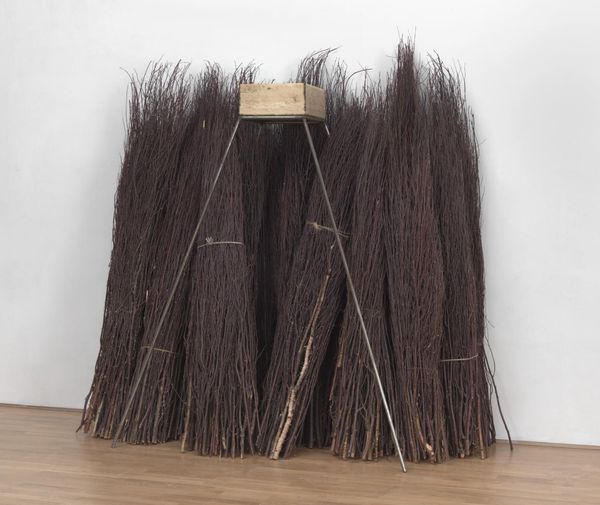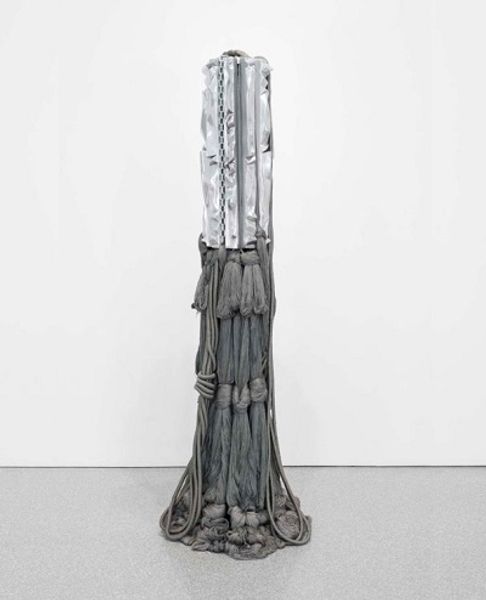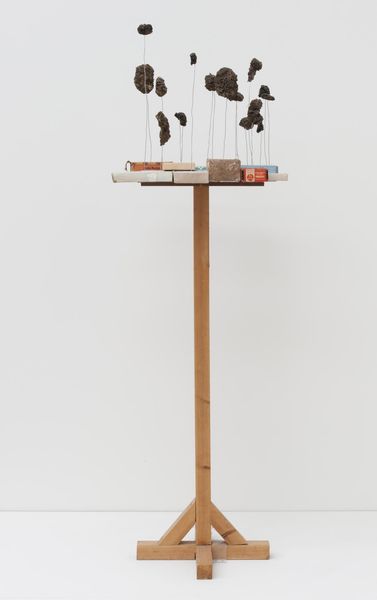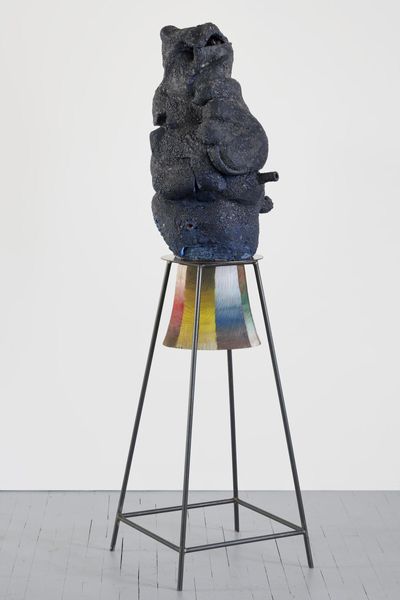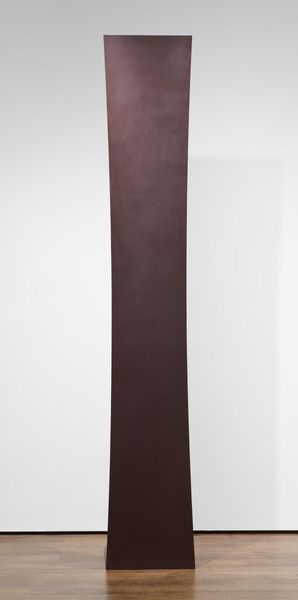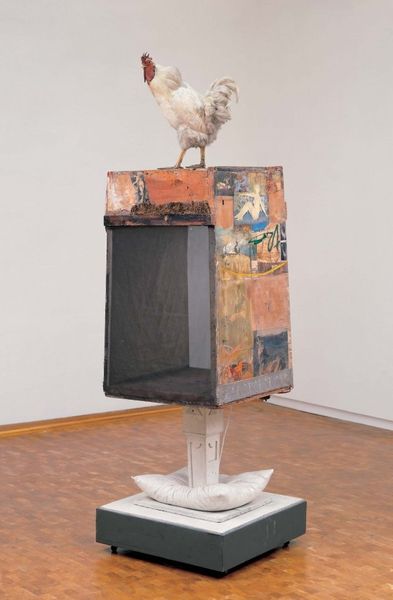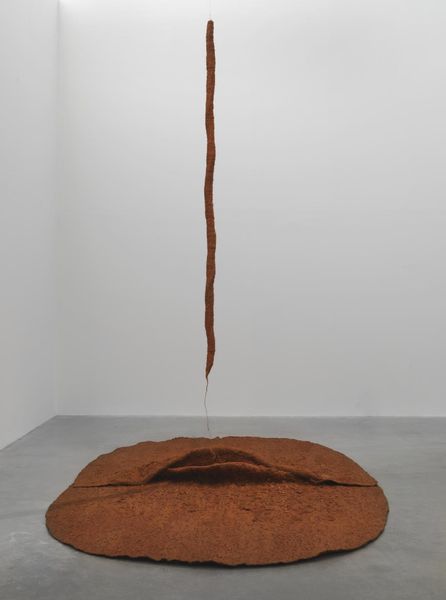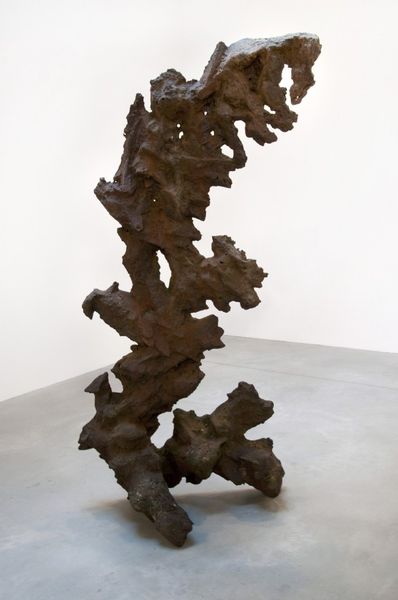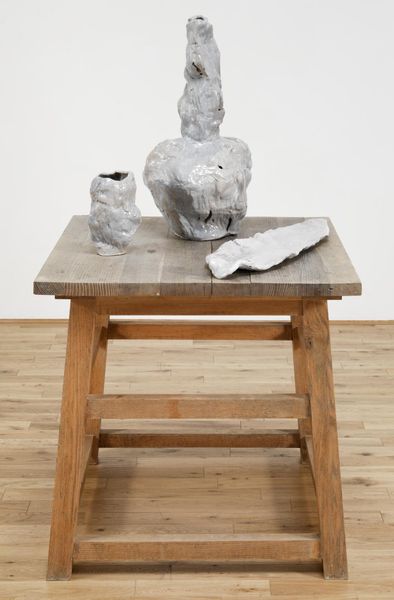
Dimensions: object: 1740 x 630 x 630 mm
Copyright: © David Nash | CC-BY-NC-ND 4.0 DEED, Photo: Tate
Editor: Here we have David Nash’s "Rostrum with Bonks." It appears to be made of wood and stone. The form is quite imposing, almost like a monument. What is your take on this piece? Curator: The work speaks to the power structures embedded in our relationship with the environment. The rough-hewn wood, combined with the unworked stones, evokes a sense of primal authority. Considering Nash’s focus on natural processes, might this rostrum question the very notion of human dominance? Editor: I hadn't considered it that way. So it’s not just about a physical structure, but a commentary on our role in the environment? Curator: Precisely. It asks us to examine the hierarchies we impose and the impact they have on the natural world. Editor: That gives me a lot to think about. Thanks! Curator: Likewise!
Comments
tate 6 months ago
⋮
http://www.tate.org.uk/art/artworks/nash-rostrum-with-bonks-t03471
Join the conversation
Join millions of artists and users on Artera today and experience the ultimate creative platform.
tate 6 months ago
⋮
Using a sculptural language partly derived from Brancusi, David Nash here presents a formal yet allusive representation of landscape through a particular use of natural materials. He has shaped the balls (or ‘bonks’) with an axe into rough approximations of spheres; one, of ash, has split when drying. The word bonk was a nickname given to a rock outcrop in a field, which the artist has described as ‘outcrop -- isolated place island-like, contained observed as places, points across the land’. The bonks, placed on top of the pine rostrum, are -- from front to back -- made of ash, chestnut and birch wood. Gallery label, February 2010
